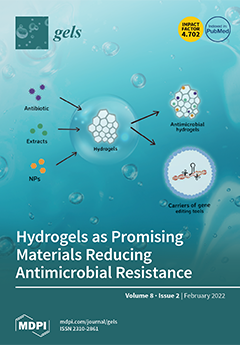Borassus flabellifer L. is a plant in Arecaceae family, widely distributed and cultivated in tropical Asian countries. The purpose of this study was to identify the bioactive compounds of
B.flabellifer L. male flower ethanolic extract and investigate the antioxidant, anti-inflammatory, and antibacterial
[...] Read more.
Borassus flabellifer L. is a plant in Arecaceae family, widely distributed and cultivated in tropical Asian countries. The purpose of this study was to identify the bioactive compounds of
B.flabellifer L. male flower ethanolic extract and investigate the antioxidant, anti-inflammatory, and antibacterial activities against
Cutibacterium acnes. Total phenolic compounds and total flavonoids in
B.flabellifer L. male flower ethanolic extract were determined by the Folin–Ciocalteu method and aluminum chloride colorimetric assay, respectively. Active substances in the extract and their quantities were analyzed by liquid chromatography and mass spectrometry (LC–MS/MS). The antioxidant evaluation was carried out using DPPH, ABTS free radical scavenging assays, and FRAP assay.
C. acnes inhibitory activity was performed by the broth microdilution method. Anti-inflammatory activity was determined by the protein denaturation assay. In addition, gel containing different amounts of
B.flabellifer L. male flower extract was formulated. The physical stability of the gel was observed by measuring viscosity and pH after six heating and cooling cycles, as well as 1-month storage at 4, 30, and 45 °C. The total phenolic content in the extract was 268.30 ± 12.84 mg gallic acid equivalent/g crude dry extract. The total flavonoid contents in the extract were 1886.38 ± 55.86 mg quercetin equivalent/g extract and 2884.88 ± 128.98 mg EGCG equivalent/g extract, respectively. The LC–MS/MS analysis revealed the presence of gallic acid, coumarin, and quercetin and the concentrations of quercetin, coumarin, and gallic acid in
B. flabellifer male flower ethanolic extract were 0.912, 0.021, and 1.610 µg/mL, respectively. DPPH and ABTS antioxidant assays indicated that the
B.flabellifer L. male flower extract had IC
50 values of 31.54 ± 0.43 and 164.5 ± 14.3 µg/mL, respectively. FRAP assay revealed that the
B.flabellifer male flower extract had high ferric ion reducing power. The extract was able to inhibit
C.acnes bacteria with a minimum inhibitory concentration (MIC) of 250 mg/mL. At 250 and 500 µg/mL, the extract demonstrated the highest anti-inflammatory activity. The gel containing 31.25%
w/w and 62.5%
w/w showed good physical stability after six heating and cooling cycles, as well as 1-month storage.
Full article






